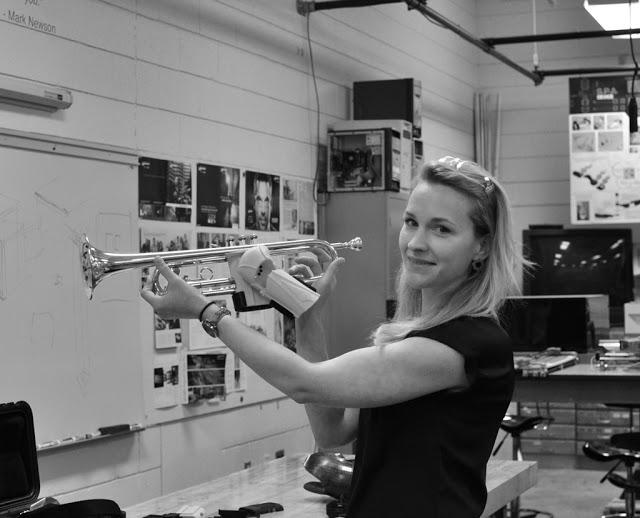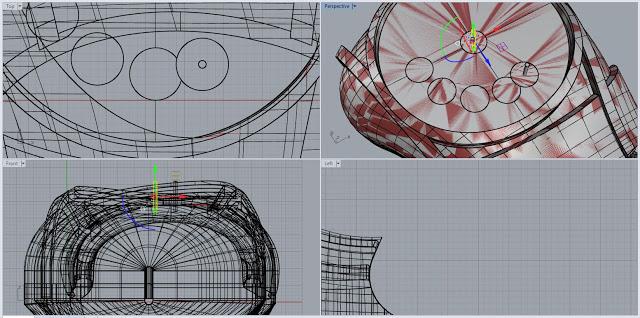The trumpet can be one of the most difficult instruments to play, even when you’ve started out with something a little more challenging like violin or cello. Many music aficionados, of all ages, are inspired–compelled even–to play this brass instrument which has been so talentedly wielded by the likes of greats such as Louis Prima, Miles Davis, and Louis Armstrong.
The trumpet is hard for so many reasons, from a melody that stands out in the band and simply can’t be flubbed, to the amount of air one must blow into the mouthpiece on a constant basis requiring strong lungs and very strong lip muscles–and just as importantly–you must find a place to practice with this very loud instrument that just seems to draw passionate people into its realm.
Although one ten-year-old boy named Karuna is missing all the fingers on one hand, he too has it in his mind to play trumpet–and with all the difficulties found in playing this instrument already–one can only think well, why not? He did have a great deal of help though as a graduate student from Wisconsin by the name of Caitlin Driver designed and 3D printed an assistive device to help him with his musical aspirations.
 Working with–you guessed it–the e-NABLE Community Foundation–Driver put great effort and great joy into this device, which served as her 2015 fellowship project in the University of Wisconsin Milwaukee’s Digital Craft Research Lab. She designed the 3D printed device in numerous sections, as follows:
Working with–you guessed it–the e-NABLE Community Foundation–Driver put great effort and great joy into this device, which served as her 2015 fellowship project in the University of Wisconsin Milwaukee’s Digital Craft Research Lab. She designed the 3D printed device in numerous sections, as follows:
- The main component, which fits onto the left side of the valves
- The bottom component, sliding over the base of the valves and main, and snapping into place
- The dovetail, connecting to the palm, via screws
- The palm, which connects to both the dovetail and gauntlet via two screws
- The gauntlet, which connects to the palm via two 1/8″ barrel Chicago screws, slotted for Velcro attachment to arm
Even with the main and bottom attached, the trumpet still fits perfectly into its case. Meant for a Bach Student Trumpet (model TR300), Driver made full-size designs as well as scaled designs of the device which helps the enthusiastic young student to hold his instrument, but went back and made some refinements to the digital design of both the gauntlet and the palm portions. In designing several of the 3D printed pieces, Driver did encounter challenges, as she reports.
For the gauntlet, she discovered that her 3D printed part required greater strength, so after fiddling with it through several different forms of experimentation, she added padding and adjusted the hole and wove the Velcro through the slots, finding the reinforcement necessary.
 The palm also required greater customization and more precise placement of the holes for the instrument. Driver was able to change that with great success, and then also found herself working further on the palm, which has two interlocking pieces. With glue, she was able to fit everything together snugly.
The palm also required greater customization and more precise placement of the holes for the instrument. Driver was able to change that with great success, and then also found herself working further on the palm, which has two interlocking pieces. With glue, she was able to fit everything together snugly.
“Like with anything I’ve ever made before, I feel like this object is one I could keep designing forever, over and over, re-doing all of the components until it’s perfect, but sometimes you’ve just got to say ‘Hey – this is great! 1st iteration done!’ and take a break for a little while,” explains Driver. “I’ve had such a great time working on this project. I never could have anticipated the feeling of accomplishment associated with designing for the e-NABLE community.”
You can download the files from Thingiverse or YouMagine, as well as check out more of her report regarding this fellowship project on her blog. Discuss your thoughts on this latest innovation which works not exactly as a prosthetic, but as an assisting device, in the Adaptive 3D Printed Trumpet Device forum thread over at 3DPB.com.
Subscribe to Our Email Newsletter
Stay up-to-date on all the latest news from the 3D printing industry and receive information and offers from third party vendors.
You May Also Like
Air Force Awards Fortius Metals $1.25M to Qualify 3D Printing Wire for Hypersonic Applications
AFWERX, part of the US Air Force Research Laboratory (AFRL), awarded a Direct-to-Phase II Small Business Innovation Research (SBIR) contract worth $1.25 million to Colorado’s Fortius Metals, to accelerate qualification...
US Air Force Awards JuggerBot $4M for Large-format Hybrid 3D Printing
Large-format 3D printer manufacturer JuggerBot has received a $4 million grant to develop a large format 3D printer, courtesy of the Under Secretary of Defense, Research and Engineering Manufacturing Technology...
Where Have All AM’s Unicorns Gone?
In the rapidly evolving world of 3D printing, startups valued at over a billion dollars, known as unicorns, once seemed as fantastical as the mythical creatures themselves. While a few...
How My Childhood Fascination with Planes Led to Investing in 3D Printing
My fascination with aerospace started young, and I started studying planes–identifying them in the sky and learning everything I could about how they work. Fast forward to my first week...

































